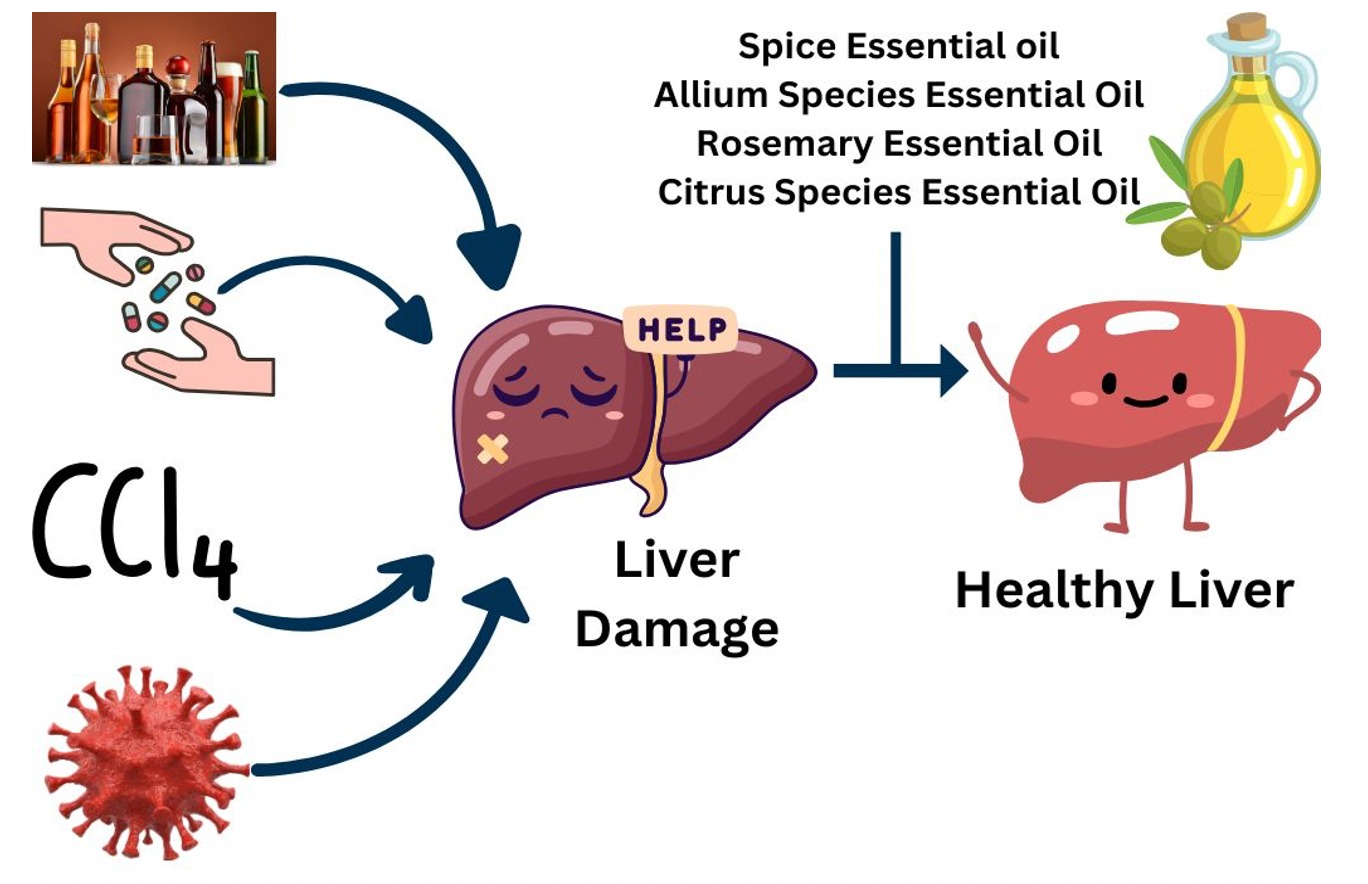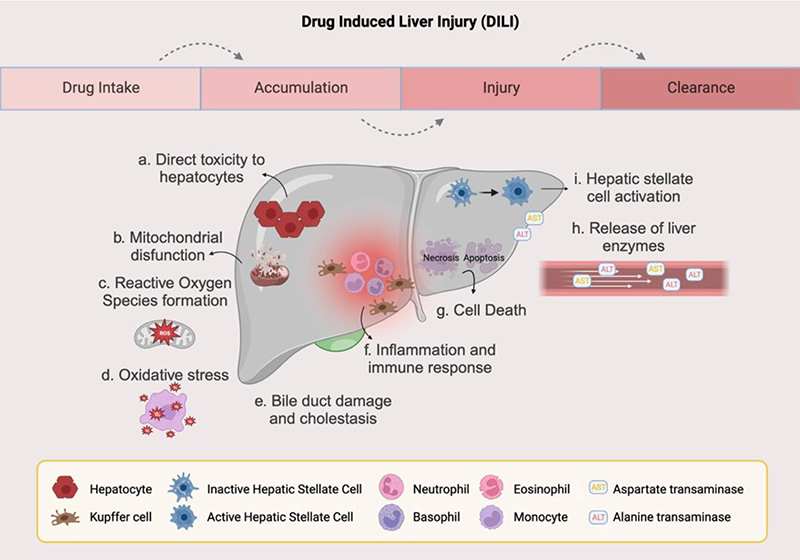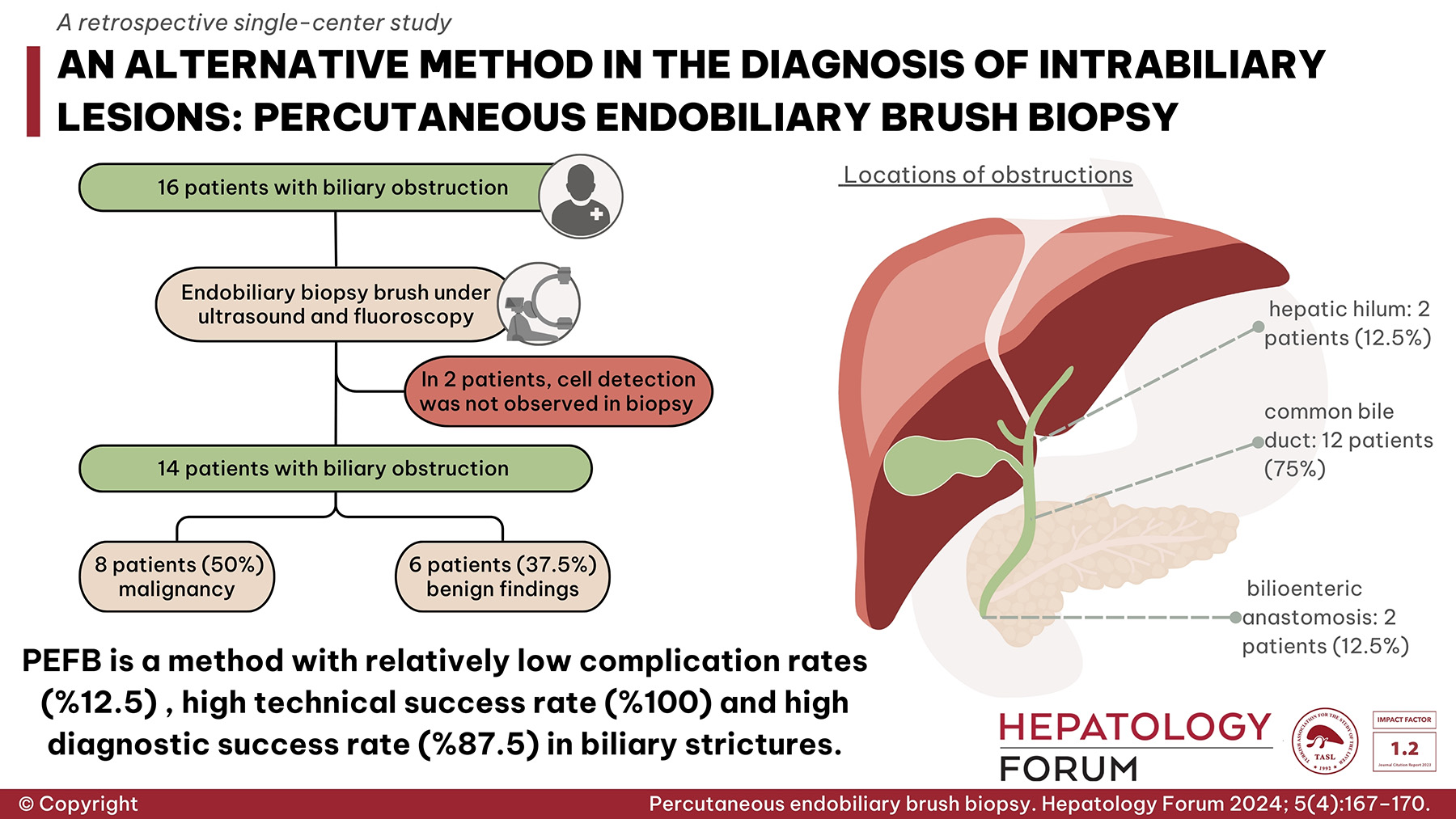2Department of Social Health, Acibadem Mehmet Ali Aydinlar University, School of Medicine, Istanbul, Turkey
3Acibadem Mehmet Ali Aydinlar University, School of Medicine, Practitioner
Abstract
Background and Aim: Recent studies have reported that the widely accepted range of upper limits of normal (ULN) alanine aminotransferase (ALT) levels (ULN<40U/L) is high for the healthy population. We aimed to find the correct ULN level for men and women in a presumed healthy liver population group.
Material and Methods: The data of 7410 healthy subjects visiting the check-up clinics were retrospectively analysed in this study. Patients were divided in to “healthy liver group” (n=2694) and “high-risk liver group” (n=4716) based on fatty liver on ultrasound, existing of chronic liver disease, ongoing significant alcohol consumption, diabetes mellitus and dyslipidaemia. Receiver operating characteristic (ROC) curves were generated and the area under the curve (AUC) was calculated at the 95th percentiles for both men and women.
Results: The AUC score of ALT for men was 0.92, and the ULN for the serum ALT in men was found as 32.10 U/L (sensitivity of 0.89, specificity 0.85). The AUC score of ALT for women was 0.90, and the ULN for serum ALT was found as 23.15 U/L (sensitivity of 0.90, the specificity of 0.88).
Conclusion: ULN for serum ALT level should be lowered and different cut-off values should be used for men (32.10 U/L) and women (23.15 U/L).
Introduction
Serum alanine aminotransferase (ALT) level is an important marker to determine the liver disease. For many years, regardless of body mass index (BMI), sex or race the upper limit of normal for serum ALT has been considered to be 40 U/L.[1–3] This value mostly comes from the era before hepatitis C virus (HCV) testing and also from time-frame when nonalcoholic fatty liver disease (NAFLD) was not considered as a liver disease that may have an impact on serum ALT level.[4,5]
It is clear that the normal range of serum ALT concentration should be determined in a healthy population, which brings another challenge because many factors, such as NAFLD, use of multiple medications and underlying liver diseases, may cause an elevation of serum ALT level. Prati et al.[6] came with a different approach and analyzed ALT ranges in a presumed healthy population after excluding subjects with risk factors for liver diseases. In their study, they found that the upper limits of normal (ULN) for serum ALT was independently related to BMI and abnormal lipid or carbohydrate metabolism. They also reported that the ULN of serum ALT should be reported as 30 U/L for men and 19 U/L for women.[6]
Many studies aiming to find the ULN for serum ALT levels in healthy individuals from different parts of the world have been published in the last decade. A study from Korea reported that the healthy ALT thresholds in biopsy- proven healthy Asians were 33 U/L for men and 25 UL for women.[7] Meanwhile, studies from China (22.15 U/L and 22.40 U/L), Taiwan (22 U/L and 17 U/L), USA (30 U/L and 19 U/L), Europe (30 U/L and 19 U/L), and India (27 U/L and 17 U/L) have all reported lower threshold for men and women, respectively.[8–11] When studies from different parts of the world are reviewed, it can be concluded that the ULN for serum ALT level for healthy adults should be between 29–33 U/L for males and 19–25 U/L for females.[6,10,12] Based on the aforementioned studies, current AASLD guideline recommends an ALT ULN of 35 U/L for men and 25 U/L for women.[13]
Studies performed on the Turkish population are lacking. Meanwhile, most laboratories in Turkey are continuing to use 40 U/L as the ULN for serum ALT level. In this study, we aimed to determine first to calculate the ULN level of ALT for men and women in the presumed healthy liver population group and second to analyze the factors associated with high serum ALT level. To our knowledge, this is the first study that aims to find the upper threshold of serum ALT level in a healthy Turkish population.
Materials and Methods
Patient Population and Study Design
In this cross-sectional hospital-based study, a total of 113,239 apparently healthy subjects, who had voluntarily applied to the check-up clinics of Acıbadem Hospitals located in İstanbul, Kocaeli, Bursa, Eskişehir, Ankara, Adana, Bodrum, Kayseri (total of 15 centers) were enrolled in this study. The data of these patients were pulled from the electronic database system of Acıbadem Health Group. Firstly, the demographic data, such as age, sex, place of birth, were noted for all patients. Secondly, a subgroup of patients representing the cohort was selected according to the hospital they were admitted, past medical history, presence and type of chronic diseases, alcohol intake, BMI, age and sex (n=7410). Each patient’s medical records were reviewed individually and abdominal ultrasound findings, serum ALT level, BMI, history of alcohol intake, presence of diabetes mellitus, dyslipidemia, hypertension, medication history, serology for viral hepatitis, and date and city of admission were noted. Patients with a history of significant alcohol consumption (n=811), known history of chronic liver disease (n=139), patients taking any type of medication (n=2423), history of diabetes mellitus (n=610) and dyslipidemia (n=543) and fatty liver on ultrasound (n=3717) were excluded from this study. The remaining individuals were defined as healthy liver group (n=2694) (Fig. 1). Mean serum ALT level was calculated in all three groups, and the ROC curve was performed to find the optimal serum ALT threshold for the healthy individuals.
This study was approved by the local ethics committee (ATADEK -2015/14-5) and was conducted according to the declaration of Helsinki.
Analysis of the Data and Definitions
Serum ALT measurements were made according to the same protocol for all patients with the upper threshold of 40 U/L. NAFLD was defined as the demonstration of hepatic steatosis in the liver by ultrasound in the absence of significant alcohol use (>140 gr/week for women and >210 gr/week for men) and exclusion of chronic liver disease. The liver was characterized as fatty liver when the liver had areas of significantly increased echogenicity relative to the renal parenchyma. The ultrasound beam was attenuated with the diaphragm indistinct, or the echogenic walls of the portal veins were less visible. Diagnoses of diabetes mellitus and dyslipidemia were made both according to patient reports and also by international diagnostic criteria based on laboratory values.
Statistical Analysis
The percentile for serum ALT levels was calculated at the 5th, 25th, 50th, 75th, and 95th percentiles. The upper limit for healthy ALT level was set to the 95th percentile. Serum ALT values were calculated for both sexes. Receiver operating characteristic (ROC) curves were generated, and the area under the curve was calculated. Sensitivities and specificities for serum ALT level were identified from the ROC curves at the points associated with maximum accuracy (i.e., the maximum value of the sum of sensitivity and specificity at the point closest to the upper left-hand corner 95% specificity). Men and women were analyzed separately because of differences in ALT distributions. Categorical data were presented as number and percent and were compared using the chi-square test or Fisher’s exact test, as appropriate. Continuous variables were expressed as mean and standard deviation unless specified otherwise and were compared using t-test or Mann-Whitney U test. Variables that had a p value of <0.01 on univariate analysis were entered into a Cox regression hazards model by forward logistic regression to determine the independent predictors of ALT. P values less than 0.05 were considered statistically significant. All statistical analyses were performed using IBM, SPSS, and Statistics v. 20.0.0 statistical software (SPSS Inc. Chicago, IL).
Results
Characteristics of the Patients
A total of 113,239 patients were included in this study. Fifty-seven percent (n=64,756) of these patients were male. The mean age of the population was 43.67±11.83 years, and the mean serum ALT level was 29.47±23.15 U/L. The subgroup representing the study population consisted of 7410 patients, and the mean age in this cohort was 43.14±12.13 years, and similar to the larger cohort, 4339 (58.6%) of them were male (Table 1).
There were 2694 patients in the healthy liver group, and 4716 patients in the high-risk liver group. The healthy liver group was younger compared to the high-risk liver group (39.52±11.17 vs 45.78±11.87, p<0.001) and predominance was seen in the high-risk group 48.5% vs. 38.4%, p<0.005). BMI scores [28.03±5.97 vs 23.58±3.85 (p<0.001)] and mean serum ALT levels [34.02±24.86 vs 22.51±16.58 (p<0.001)] were higher in the high-risk group compared to the healthy liver group (Table 1).
Upper Normal Limits for the Levels of Serum ALT for Men and Women
The areas under the ROC curve of ALT for men were 0.92 at 95% confidence interval. The upper normal limit for the level of serum ALT for men was found as 32.10 U/L with a sensitivity of 0.89 and a specificity of 0.85. Meanwhile, the areas under the ROC curve of ALT for women was 0.90, and the upper normal limit for the level of serum ALT was 23.15 U/L with a sensitivity of 0.90 and a specificity of 0.88 (Fig. 2).
Factors that Affect the Serum Level of ALT
Univariate analysis showed that serum ALT level was significantly higher among male sex (p<0.001), patients with liver disease (p<0.001), elderly patients (p<0.001), patients with higher BMI (p<0.001), patients with dyslipidaemia (p<0.001), history of ongoing alcohol consumption (p<0.001), and ongoing medicine usage (p<0.001) Logistic regression analysis found that male sex [OR:3.33, 95%CI (2.82–3.98), p<0.001], liver disease [OR:3.06, 95%CI (1.36–4.55), p<0.001], high BMI [OR:2.28, 95%CI (1.29–3.01), alcohol consumption [OR:2.05, 95%CI (1.26–2.16), p<0.001], older age [OR:1.62, 95%CI (1.02–1.74), p=0.035,], ongoing medication use [OR:1.20, 95%CI (1.08–1.56), p<0.042], and dyslipidaemia [OR:1.17, 95%CI (1.10–1.60), p=0.045] were independent factors associated higher serum ALT levels (Table 2).
Discussion
In this hospital-based cross-sectional study, the data of sample from 113,239 apparently healthy subjects from 15 different centers -located in eight different cities- were distributed across Turkey, were analyzed and the upper normal limit for the level of serum ALT for men was found as 32.10 U/L for men and 23.15 U/L for women.
Recently, several reports have re-evaluated the correct level ULN for serum ALT. Pratt[3] was the first to address this issue; in his study, which involved 6835 HCV negative blood donors, he clearly showed that serum ALT level was independently associated with gender, BMI and dyslipidaemia. In the aforementioned study, he proposed that ULN for serum ALT should be 30 U/L for men and 19 U/L for women.[3] The results of this study and many others published in the literature are similar to ours, and all conclude that the threshold for serum ALT should be lowered, but due to the design of our study, we were able to collect data on alcohol consumption and fatty liver (all patients in the study had liver ultrasound) which made our study different from many studies on this topic.[8–11]
The underlying reason for the effects of age, BMI and sex related changes on serum ALT levels remain unclear. Some authors believe the change in the metabolic conditions in years (such as high triglyceride levels and BMI) and misdiagnose of fatty liver (most studies did not perform liver ultrasound) is the reason for this difference. In this study and also in some other published studies, dyslipidemia and high BMI were found not to be a con-founder but as an independent factor that had an impact on serum ALT levels.[14–16]
The strength of this study comes from its large sample size, the cohort of the study population and the data collection method. The data were pulled from the same database from 15 different centers -located in eight different cities- distributed across Turkey where all hospitals were using the same method and cut-off values for serum ALT level. All patients had liver ultrasound results and demographics, alcohol consumption history, laboratory values for diabetes mellitus had dyslipidaemia and past medical history were noted for all patients. With the existence of these variables, the healthy liver group was defined in a very appropriate way.
This study also has some limitations. Firstly, some of the patients were classified based on patient and physician reports as having diabetes mellitus, dyslipidaemia, and medication use. Secondly, although we had patients from almost all parts of the country and the cohort’ demographic data was similar to the general population; the study population may not be a full representative of the general population.
In conclusion, we showed that ULN for serum ALT is affected by gender, BMI, age, alcohol consumption, medication use, liver disease, and metabolic diseases, such as dyslipidaemia. The upper normal limit for the level of serum ALT was found as 32.10 U/L for men and 23.15 U/L for women with a sensitivity of 0.89 and a specificity of 0.85 for men and 0.90 and specificity of 0.88 for women, respectively. To our knowledge, this is the first study in Turkey to examine the ULN of ALT.
Ethics Committee Approval: This study was approved by the local ethics committee (ATADEK-2015/14-5) and was conducted according to the declaration of Helsinki.
Peer-review: Externally peer-reviewed.
Author Contributions: Concept – BD, NT, FG, SY; Design – BD, NT, FG, SY, GS, MT; Supervision – BD, NT FG; Resource – BD, NT, FG, SY, UB, EG, THS; Materials – BD, SY, UB, EG, THS, DM, MT; Data Collection and/or Processing – BD, SY, UB, EG, THS, DM, MT; Analysis and/or Interpretation – BD, NT, FG, SY, UB, EG, THS, DM, MT; Literature Search – BD, SY, UB, EG, THS, DM, MT; Writing – BD, NT, FG, SY; Critical Reviews – BD, NT, FG, SY.
Conflict of Interest: The authors does mot have any conflict of interest.
Financial Disclosure: The authors declared that this study has received no financial support.
References
| 1. Siest G, Schiele F, Galteau MM, Panek E, Steinmetz J, Fagnani F, et al. Aspartate aminotransferase and alanine aminotransferase activities in plasma: statistical distributions, individual variations, and reference values. Clin Chem 1975;21(8):1077-1087. https://doi.org/10.1093/clinchem/21.8.1077 PMid:1137913 | ||||
| 2. Sherman KE. Alanine aminotransferase in clinical practice. A review. Arch Intern Med 1991;151(2):260-265. https://doi.org/10.1001/archinte.151.2.260 PMid:1992953 | ||||
| 3. Pratt DS, Kaplan MM. Evaluation of abnormal liver-enzyme results in asymptomatic patients. N Engl J Med 2000;342(17):1266-1271. https://doi.org/10.1056/NEJM200004273421707 PMid:10781624 | ||||
| 4. Alberti A, Morsica G, Chemello L, Cavalletto D, Noventa F, Pontisso P, et al. Hepatitis C viraemia and liver disease in symptom-free individuals with anti-HCV. Lancet 1992;340(8821):697-698. https://doi.org/10.1016/0140-6736(92)92234-7 | ||||
| 5. Daniel S, Ben-Menachem T, Vasudevan G, Ma CK, Blumenkehl M. Prospective evaluation of unexplained chronic liver transaminase abnormalities in asymptomatic and symptomatic patients. Am J Gastroenterol 1999;94(10):3010-3014. https://doi.org/10.1111/j.1572-0241.1999.01451.x PMid:10520861 | ||||
| 6. Prati D, Taioli E, Zanella A, Della Torre E, Butelli S, Del Vecchio E, et al. Updated definitions of healthy ranges for serum alanine aminotransferase levels. Ann Intern Med 2002;137(1):1-10. https://doi.org/10.7326/0003-4819-137-1-200207020-00006 PMid:12093239 | ||||
| 7. Das K. "Normal" alanine aminotransferase and Christopher Boorse. Hepatology 2010;52(3):1173. https://doi.org/10.1002/hep.23731 PMid:20568302 | ||||
| 8. Zhang P, Wang CY, Li YX, Pan Y, Niu JQ, He SM. Determination of the upper cut-off values of serum alanine aminotransferase and aspartate aminotransferase in Chinese. World J Gastroenterol 2015;21(8):2419-2424. https://doi.org/10.3748/wjg.v21.i8.2419 PMid:25741150 PMCid:PMC4342919 | ||||
| 9. Wu WC, Wu CY, Wang YJ, Hung HH, Yang HI, Kao WY, et al. Updated thresholds for serum alanine aminotransferase level in a large-scale population study composed of 34 346 subjects. Aliment Pharmacol Ther 2012;36(6):560-568. https://doi.org/10.1111/j.1365-2036.2012.05224.x PMid:22817613 | ||||
| 10. Ruhl CE, Everhart JE. Upper limits of normal for alanine aminotransferase activity in the United States population. Hepatology 2012;55(2):447-454. https://doi.org/10.1002/hep.24725 PMid:21987480 PMCid:PMC3268908 | ||||
| 11. Kumar S, Amarapurkar A, Amarapurkar D. Serum aminotransferase levels in healthy population from western India. Indian J Med Res 2013;138(6):894-899. | ||||
| 12. Lee JK, Shim JH, Lee HC, Lee SH, Kim KM, Lim YS, et al. Estimation of the healthy upper limits for serum alanine aminotransferase in Asian populations with normal liver histology. Hepatology 2010;51(5):1577-1583. https://doi.org/10.1002/hep.23505 PMid:20162730 | ||||
| 13. Terrault NA, Lok ASF, McMahon BJ, Chang KM, Hwang JP, Jonas MM, et al. Update on prevention, diagnosis, and treatment of chronic hepatitis B: AASLD 2018 hepatitis B guidance. Hepatology 2018;67(4):1560-1599. https://doi.org/10.1002/hep.29800 PMid:29405329 PMCid:PMC5975958 | ||||
| 14. Kang HS, Um SH, Seo YS, An H, Lee KG, Hyun JJ, et al. Healthy range for serum ALT and the clinical significance of "unhealthy" normal ALT levels in the Korean population. J Gastroenterol Hepatol 2011;26(2):292-299. https://doi.org/10.1111/j.1440-1746.2010.06481.x PMid:21261719 | ||||
| 15. Dufour DR, Lott JA, Nolte FS, Gretch DR, Koff RS, Seeff LB. Diagnosis and monitoring of hepatic injury. I. Performance characteristics of laboratory tests. Clin Chem 2000;46(12):2027-2049. https://doi.org/10.1093/clinchem/46.12.2027 PMid:11106349 | ||||
| 16. Siest G, Henry J, Schiele F, Young DS. Interpretation of Clinical Laboratory Tests: Reference Values and Their Biological Variation. Foster City, CA: Biomedical Publications, 1985;459. | ||||





 Bulent Degertekin1
Bulent Degertekin1 









